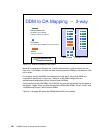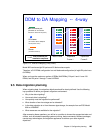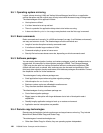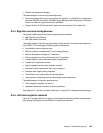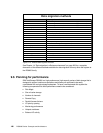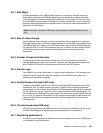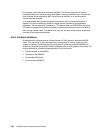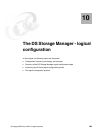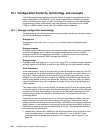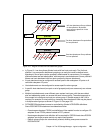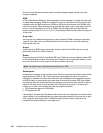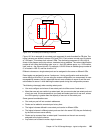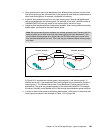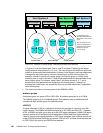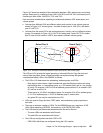190 DS8000 Series: Concepts and Architecture
10.1 Configuration hierarchy, terminology, and concepts
The DS Storage Manager provides a powerful, flexible, and easy to use application for the
logical configuration of the DS8000. It is the client’s responsibility to configure the storage
server to fit their specific needs. It is not in the scope of this redbook to show detailed steps
and scenarios for every possible setup. Help and guidance can be obtained from an IBM
FTSS or an IBM Business Partner if the client requires further assistance.
10.1.1 Storage configuration terminology
An understanding of the following concepts and terminology may help you use and configure
the DS Storage Manager configurator:
Storage unit
A storage unit, also known as a storage facility, is a single physical storage subsystem
(DS8000).
Storage complex
A storage complex consists of one or more physical storage units that can be managed from
a central management point. DS8000 units can be placed together to form a complex.
Currently one DS8000 is managed by one S-HMC. In 1Q05 you will be able to have one
S-HMC (or also a redundant S-HMC) manage two DS8000s.
Storage image
A storage image, also known as a storage facility image(SFI), is a logical storage subsystem
and only applies to the DS8000. It consists of two LPARs, one on each processor complex.
Host attachment
A host attachment is a group of host ports that you want to manage the same way. The GUI
allows grouping of one or more host ports, installed on a given host, into what is called a
host
attachment
. The host ports we are referring to here are the HBA ports on the host, not the
DS8000. The GUI allows the user to specify the WWPNs of each HBA on the host that you
want to group together to form a host attachment. You specify how many HBAs you want to
connect to on the host, then click a checkbox to indicate that you want to group these (host
HBAs) together.
This makes it easy to set up volume access, via storage image I/O ports and volume groups,
in the same way for all the host ports, since the same settings are applied to all the host ports
grouped into the same host attachment. Volumes can be assigned to volume groups, and
volume groups can then be assigned to host attachments, for presentation to the host
operating systems.
Traditionally we think of hosts with one or more Fibre Channel adapters (HBAs), with each
adapter having one or more Fibre Channel ports. Each port has a unique Fibre Channel
address called the World Wide Port Name (WWPN). The WWPN is the address to which we
assign volumes. A host attachment is a grouping of ports and their World Wide Port Names.
Definitions are made about hosts and attachments in the GUI. The concepts and limitations
are explained in the following list:
Multiple Fibre Channel ports’ WWPNs on the same host system can be specified in one or
more host attachments, in one host definition called
host system in the GUI. A host
attachment does not always mean a single port. For example, refer to Figure 10-1 on
page 191.



